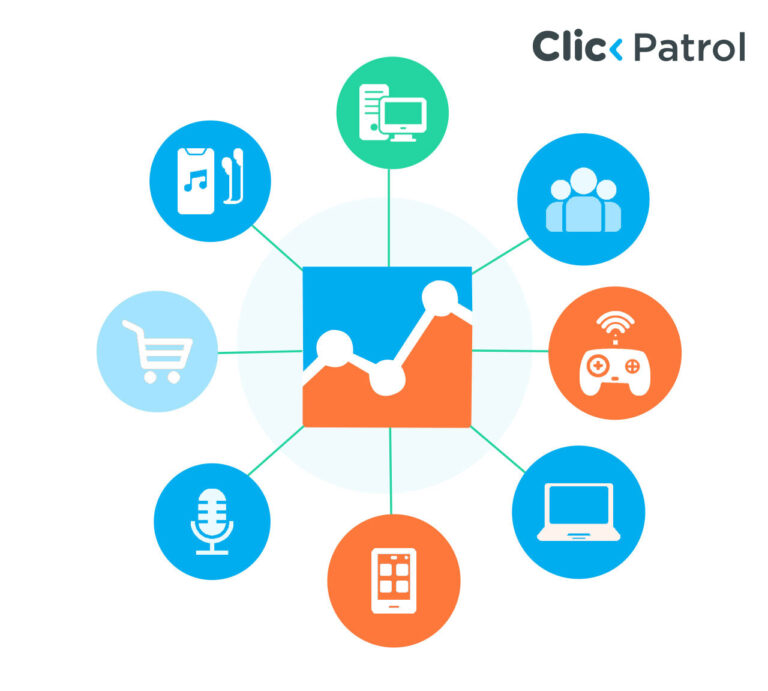
How to Experience Fraud Free Advertising in 2024
Abisola Tanzako | Aug 05, 2024

Table of Contents
Can marketers experience fraud free advertising?
A significant company’s marketing strategy is advertising. Nonetheless, advertisers now confront several hurdles due to the growth of digital marketing. The most notable is ad fraud, a recurring danger that compromises the efficacy of advertising efforts and ruins public confidence in the digital environment. Advertising free from fraud is growing in importance as companies increasingly depend on online platforms to connect with their target markets.
This article will discuss the many forms and impacts of ad fraud, the significance of fraud-free advertising, and its consequences. It will also provide insights into how advertisers can protect their investments and increase the effectiveness of their advertising campaigns.
What is ad fraud?
Ad fraud, also called invalid traffic (IVT), is the intentional creation of false impressions, clicks, or conversions on digital advertising to deceive publishers, advertisers, and consumers, resulting in financial losses and compromising data. A projection by Statista research reveals a concerning trend in the digital advertising industry. Over the next four years, global costs related to ad fraud are expected to surge from $88 billion to an unsettling $172 billion.
This represents an alarming annual growth rate of approximately 14 percent, effectively doubling the financial impact of ad fraud during this period. As fraudsters continuously adapt to the measures taken by advertisers, the industry faces mounting pressure to innovate and implement more effective countermeasures to safeguard advertising investments and maintain trust in digital channels.
Ad fraud falls into two categories:
- General Invalid Traffic (GIVT) includes simple fraudulent acts that are detectable by common procedures such as regular checks or blacklists. Examples include controlled behaviours or traffic produced by bots from recognized data centres.
- Sophisticated, intelligent bots (SIVTs) involve imitating human behaviour, malware-driven ad fraud, or sophisticated domain spoofing schemes, which are examples of more advanced forms of fraud. SIVT detection necessitates complex analytics, and, in some instances, direct human involvement.
Forms of ad fraud
Ad fraud comes in various forms, each designed to exploit vulnerabilities in the digital advertising industry. Some types include:
- Click fraud: This involves artificially inflating click-through rates on digital ads. It can be performed by humans in click farms or, more commonly, by bots programmed to click on ads repeatedly. The goal is to drain advertisers’ budgets quickly and skew campaign metrics. Click fraud is particularly damaging in pay-per-click (PPC) advertising models.
- Impression fraud: Similar to click fraud, but focused on generating fake ad impressions. Fraudsters use bots or hidden browser windows to load ads that real users never see.
- Ad injection: This occurs when unauthorized ads are inserted into web pages, often through browser extensions or malware on a user’s device. These injected ads replace legitimate ads or appear in places where no ads should be, effectively stealing ad revenue from legitimate publishers.
- Domain spoofing: In this form, fraudsters misrepresent low-quality websites as premium publishers. They may create fake domain names that closely resemble legitimate sites or use sophisticated techniques to make it appear that ads are being served on high-value websites when they are on low-quality or invalid sites.
- Ad stacking: This involves placing different ads on top of each other in a single ad slot, with only the top ad visible to the user. However, impressions are counted for all the stacked ads, allowing fraudsters to charge for ad placements that were not viewable.
- Pixel stuffing: Similar to ad stacking, pixel stuffing involves placing ads into tiny, often 1×1 pixel frames on a webpage. These ads are technically served but are entirely invisible to users, yet still count as impressions.
- Cookie stuffing: This fraud involves dropping multiple affiliate tracking cookies onto a user’s browser without their knowledge. When the user later purchases from one of these merchants, the fraudster receives an unearned affiliate commission, even though they did not legitimately refer to the sale.
Impacts of ad fraud on ad campaigns
The impacts of ad fraud on advertising campaigns are far-reaching and detrimental:
- Wasted budget: Ad fraud’s most direct and damaging impact is misallocating advertising budgets. When fraudsters generate fake clicks, impressions, or conversions, advertisers pay for never-occurring engagements.
- Skewed performance metrics: Ad fraud distorts campaign performance data, making it difficult for marketers to assess the effectiveness of their strategies accurately. Inflated click-through rates, conversion rates, or impression counts can result in a false sense of success, leading to misguided optimization efforts.
- Reduced return on investment (ROI): As ad spend is diverted to fake engagements, the overall ROI of advertising campaigns decreases. Even if some metrics appear positive due to invalid activity, the lack of genuine user engagement means the actual business outcomes, such as sales, leads, or brand awareness, need to materialize as expected.
- Damage to brand reputation: Ad fraud can inadvertently associate brands with low-quality or invalid websites. In domain spoofing or ad injection, a brand’s advertisements may appear on sites that do not align with their values or target audience.
- Ineffective audience targeting: Invalid traffic makes it challenging to identify and reach the intended audience accurately. Bot activity can contaminate user-profiles and behavioural data, leading to misguided audience segmentation.
- Distorted market insights: Ad fraud does not just affect individual campaigns; it can skew market-wide data and benchmarks. This can lead to unrealistic expectations across the industry and make it difficult for advertisers to gauge their performance accurately relative to competitors.
- Erosion of trust in the digital industry: Persistent ad fraud undermines confidence in digital advertising platforms and technologies. This ruined trust can make advertisers more hesitant to invest in digital channels, potentially slowing innovation and growth in the digital marketing sector.
How to prevent ad fraud
Preventing ad fraud requires numerous approaches, which include:
- Implement advanced fraud detection tools: Utilize sophisticated software such as ClickPatrol that employs AI and machine learning algorithms to analyze click data. These tools can identify suspicious patterns and inconsistencies that indicate invalid activity, adapting to new fraud techniques as they emerge.
- Partner with reputable ad networks: Choose trustworthy partners with strong fraud prevention measures. Look for networks that conduct regular audits, maintain transparent practices, and are committed to industry standards.
- Utilize ads.txt and ads. Cert: Implement these IAB Tech Lab initiatives to prevent domain spoofing and unauthorized inventory sales. Ads.txt allows publishers to list authorized sellers, while Ads. Cert provides cryptographic signatures for bid requests for enhanced security in programmatic advertising.
- Employ multi-layered verification: Use multiple verification methods, including IP checks, browser and device verification, behavioural analysis, and contextual relevance assessment. Incorporate third-party verification services for an extra layer of impartial scrutiny.
- Monitor traffic quality regularly: Analyze key metrics such as click-through, conversion, and bounce rates. Pay attention to traffic sources and look out for those that consistently underperform or show suspicious patterns.
- Implement blacklisting and whitelisting: Maintain and regularly update lists of known fraudulent sources (blacklists) and verified legitimate sources (whitelists). This helps control where ads are displayed, preventing them from appearing in invalid contexts while ensuring they are shown on trusted sites.
- Educate team members: Ensure all team members involved in digital advertising campaigns are well-informed about ad fraud. Conduct regular training sessions on the latest fraud techniques, prevention methods, and best practices.
Understanding fraud free advertising
Fraud-free advertising refers to the methods, technology, and tactics that aim to reduce or eliminate the risk of ad fraud in digital marketing campaigns. It includes proactive steps to give users, publishers, and marketers a safe and open environment. It also refers to ensuring that actual users, as opposed to bots or fraudulent individuals, are behind the generated ad impressions, clicks, and conversions.
Fraud-free advertising involves more than just detecting fraud. It involves developing an environment where trust, responsibility, and transparency are essential. This strategy not only safeguards advertisers’ financial investments but also promotes a more positive digital advertising environment that benefits all parties involved, including publishers, advertisers, and consumers.
Types of fraud free advertising
Several approaches and technologies contribute to fraud-free advertising:
- Blockchain-based ad platforms: These platforms utilize blockchain technology to create an immutable record of ad transactions. Every impression, click, or conversion is securely recorded on a decentralized ledger, making data manipulation extremely challenging.
- AI-Powered fraud prevention systems: Advanced AI systems identify and prevent fraudulent activities before they impact campaigns. These systems detect complex patterns and abnormalities that traditional methods might miss.
- Supply path optimization (SPO): SPO involves analyzing and optimizing the path for ad impressions in programmatic advertising. By identifying efficient and trustworthy delivery paths, advertisers reduce exposure to potential fraud sources.
- Ads. Cert implementation: Ads. Cert is an advanced cryptographic protocol that digitally signs bid requests in programmatic advertising. Implementing Ads. Cert gives advertisers confidence that they are bidding on genuine ad inventory from legitimate publishers, significantly reducing the risk of domain spoofing and other inventory fraud.
- Verified human traffic solutions: These solutions ensure that ad interactions originate from real humans rather than bots. Techniques include behavioural analysis, device fingerprinting, and biometric indicators.
- Contextual advertising approaches: Advertising places ads based on webpage content rather than user data. By analyzing text, images, and metadata, these systems serve relevant ads without tracking user behaviour across sites.
- Direct programmatic deals: Advertisers establish direct relationships with publishers or trusted partners, bypassing the open programmatic marketplace. These arrangements (such as programmatic guaranteed, preferred deals, or private marketplaces) give advertisers more control over ad placement.
Impacts of fraud free advertising on ad campaigns
Implementing fraud-free advertising practices can have significant positive impacts on ad campaigns:
- Improved ROI: Advertisers achieve a higher return on investment (ROI) when ad spending is directed toward genuine interactions. By minimizing fraudulent activities, each amount spent generates more meaningful results.
- Accurate performance metrics: Fraud-free campaigns lead to more accurate performance metrics. When fake clicks and impressions are eliminated, advertisers can trust that their data reflects actual performance.
- Enhanced trust: Advertisers who actively combat fraud build stronger relationships with publishers and ad networks. Transparency fosters trust within the advertising industry, benefiting all stakeholders.
- Better user experience: Real users benefit from more relevant ads. When invalid traffic is reduced, users encounter content that aligns with their interests, leading to improved engagement and overall satisfaction.
- Increased budget efficiency: Resources previously lost to fraud can now be reallocated to strategies that drive real business outcomes. Advertisers can invest in creative content, audience targeting, or other growth-focused initiatives.
- Improved brand safety: Fraud-free advertising contributes to enhanced brand safety. Protecting brand reputation is crucial, and avoiding association with invalid practices ensures a positive image in the market.
- More effective targeting: Advertisers can more accurately target their desired audiences with cleaner data. This precision leads to better ad placements, higher conversion rates, and improved campaign performance.
Protect your ad investments
Ad fraud remains a substantial challenge in the digital advertising industry. However, advertisers, publishers, and marketers can better protect their investments, enhance campaign success, and contribute to a more positive digital marketing environment by being aware of the many forms of ad fraud, their impacts, and how to establish fraud-free advertising practices.
Also, as technology advances and new fraud protection tactics emerge, remaining aware and adaptive will be essential for effective digital advertising. The road to fraud-free advertising continuously calls for cooperation from industry associations, publishers, advertisers, and technology companies.
FAQs
Q.1 Can small businesses afford fraud prevention tools?
Yes! Small businesses, particularly new ones, often face unique risks because they may be unable to help invest in pricey fraud-prevention tools. However, simple yet effective methods lower the chance of fraud, regardless of how small or new your business is.
Q.2 How often should I audit my ad campaigns for fraud?
Regularly auditing your ad campaigns for fraud is essential to protecting your advertising budget and ensuring optimal performance. However, the frequency depends on the campaign scale, milestones, and risk tolerance.
Q.3 Is click fraud only a problem in pay-per-click advertising?
Click fraud is not exclusive to pay-per-click (PPC) advertising but is most commonly associated with it. While click fraud is most commonly associated with PPC, various forms can affect all types of digital advertising, including display, video, and social media ads.





